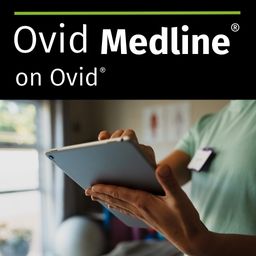Large Language Models (LLMs). gather data from a variety of sources - websites, databases, social media, and user input; however, these sources are not always made public. The system "learns" from interactions to improve the experience. These can also be called "Chatbots". ChatGPT, (GPT stands for generative pre-trained transformer) from the company OpenAI, is an example of a sophisticated chatbot and is " capable of understanding natural human language and generating impressively detailed human-like written text." (Source: The Guardian). Other companies offer their own generative chatbots - some examples are Gemini, Claude and Bing AI/Copilot.
Some concerns about the use of ChatGPT :
Search the following subject headings/keywords in the databases below to find articles on the use of ChatGPT and Chatbot technologies in healthcare. As this is a newer technology, there are very limited subject headings for the concept. When subject headings are not available, use a keyword search.

Includes Science, Social Sciences, Arts & Humanities and Emerging Sources Citation Indexes. Also includes Journal Citation Reports, and Conference Proceedings. Added functionality available with personal account.

Citations and abstracts to the biomedical literature, including the allied health fields and the biological and physical sciences, humanities, and information science as they relate to medicine and health care. Added functionality available with personal account. Good for foreground questions.

Contains citations to the published literature on health services, technology, law, administration, and research. Focuses on both the clinical and non-clinical aspects of health care delivery. Added functionality with personal account.

Daily news reports and analysis of the biotech, pharmacology, and life sciences industries. Personal account (only available to GUMC users) required . DML has a very limited number of STAT Plus accounts, please only sign up if access is integral to GUMC mission.
First time users will need to email dmlresources@georgetown.edu in order to request and obtain an account. Mozilla Firefox is the recommended browser.

Provides access to research articles made available before the formal publication in a journal (preprints) from arXiv, bioRxiv, chemRxiv, medRxiv and Preprints.org respositories. Added functionality available with personal account.

DML Discover facilitates the global discovery of high quality articles, books, and other biomedical information resources with a single search. Added functionality available with personal account.
Search the following subject headings/keywords in the databases below to find content on the use of ChatGPT and chatbot technologies in healthcare. As this is a newer technology, there are very limited subject headings for the concept. When subject headings are not available, use a keyword search.

Search for electronic and print books with the online catalog for Dahlgren Memorial Library at GUMC. Use DML 's Document Delivery Service to request materials not owned by DML.

National Library of Medicine's (NLM) LocatorPlus can be searched to find the books, journals, and audiovisuals owned by NLM.
Get the most out of an interaction with ChatGPT/LLMs by using prompt engineering, a practice of formulating questions in specific ways to guide the responses. The way a question is asked can have a significant impact on the information returned.
The CLEAR Framework for Prompt Engineering provides guidelines and methods that can be used to optimize interactions with AI large language models such as ChatGPT.